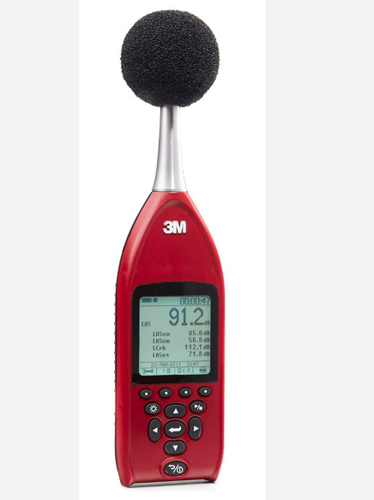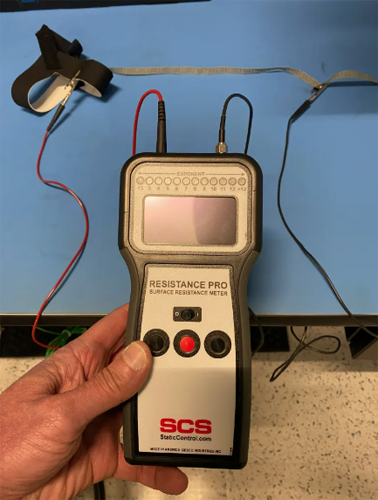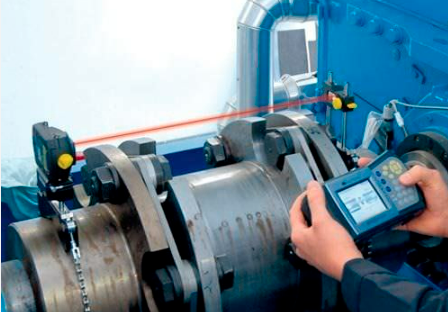
Sound Level MeterS Calibration
Fast turnaround means little downtime
Our calibration laboratory can perform calibrations on sound level metres as well as calibrators of both Class I and Class II variations.
For more information on our sound calibration services,
give us a call or fill out the calibration form to the right, and we'll get
back to you as soon as possible. We can calibrate sound metres of both types 1
and 2, as well as personal noise dosimeters and type 1/type 2 acoustic
calibrators.
We offer calibration on the following anemometers and
wind speed meters,
Sound Calibrators,
Sound Level Calibrator,
Class 1 Acoustic Calibrator,
Class 2 Acoustic Calibrator,
Sound Meter Acoustic Calibrator,
Sound Meters,
Sound Meter,
Sound Level Meter,
Noise Meter,
Decibel Meter,
Audiometer,
About Sound Level Meters
Sound Level Meters (or Sound Meters) are the instruments
that measure sound pressure levels. Sound Pressure Level (or Sound Level) is a
logarithmic measure of the effective sound pressure of a sound relative to a
reference value. It is measured in decibels (dB) above a standard reference
level. The standard reference sound pressure in air is 20 ?Pa, which is usually
considered the threshold of human hearing (at 1 kHz). Sound Pressure Level (Lp)
is calculated according to the following formula:
where:
pref is the reference sound pressure, and
prms is the rms sound pressure being measured.
Sound level meters are commonly used for measuring
several kinds of noise, especially for industrial, environmental and aircraft
applications.
According to IEC 61672-1 “Electroacoustics – Sound level
meters, Part1: Specifications”, there are three kinds of sound level meters:
The conventional sound level meter that measures
exponential time-weighted sound level.
The integrating-averaging sound level meter that measures
time-average sound level.
The integrating sound level meter that measures sound
exposure level.
A sound level meter can perform any one, or all, of the
above three kinds of measurements. Frequency weighting A is mandatory for all
sound meters since its use is required in all countries in order to protect
workers against noise-induced deafness.
A frequency weighting A is also mandatory in all civil aircraft noise
measurements.
Frequency weighting C is only mandatory for sound level
meters conforming to class 1 tolerance limits (classes are explained below).
The Zero frequency weighting (Z-weighting) is optional.
Sound level meters are commonly used to measure sounds
generally in the range of human hearing. Their main components are a
microphone, a signal processor and a display device. A sound level meter may be
a self-contained hand-held instrument with an attached microphone and a
built-in display device or it may comprise of separate components in one or
more enclosures and may be capable of displaying a variety of acoustical signal
levels. Depending on their construction, sound level meters are also classified
into three groups as follows:
Group X sound level meters: self-contained instruments
which operate, in normal mode, with internal battery power, requiring no
external connections to other apparatus.
Group Y sound level meters: self-contained instruments
which require connection to a public supply of electric power for the normal
mode of operation, requiring no external connections to other apparatus.
Group Z sound level meters: instruments which require two
or more items of equipment, which are essential constituent parts of the sound
level meter, to be connected together by some means for the normal mode
operation. The separate items may be operated from internal batteries or from a
public power supply of electric power.
Depending on their accuracy, sound level meters are
divided into two performance categories, class 1 and class 2. Sound level
meters of both classes have the same functionality but they differ mainly in
the tolerance limits. Class 1 instruments have a wider frequency range and a
tighter tolerance than class 2 sound level meters which are lower cost
instruments. In the following table the tolerance limits (in dB) of each class
are presented in some indicative frequencies, as stated in IEC 61672-1:
Sound Level Meter Calibration
Having analyzed what a sound level meter is and how it
works, we can now see, how it is calibrated
First of all, according to IEC 61672-1, the reference
environmental conditions of a laboratory performing sound meter calibrations
should be:
Temperature: 20 to 26 oC
Static Pressure: 80 to 105 kPa
Relative Humidity: 25 to 70%
The environmental conditions of the laboratory shall be
measured and recorded during the calibration.
Prior to any measurements, the sound level meter and all
accessories shall be visually inspected, paying particular attention to damage
to, or accumulation of foreign materials on the protection grid or diaphragm of
the microphone. Also, before conducting any test, the voltage delivered by the
power supply for the sound level meter shall be checked to ensure that it is
within the specified operating limits.
In order to calibrate sound level meters, a sound
calibrator must be used. According to IEC 61672-1, at least one model of sound
calibrator shall be stated in the sound level meter’s instruction manual for
checking and maintaining the correct indication on its display. For class 1
sound level meters, a sound calibrator conforming to class 1 specifications of
IEC 60942 is required. For class 2 instruments, the sound calibrator shall
conform to either class 1 or class 2 specifications of IEC 60942.
The sound calibrator usually provides a reference sound
pressure level of 94 dB or/and 114 dB at the frequency of 1 kHz. The sound
calibrator must have a traceable and documented calibration certificate from a
higher level laboratory (often from a national metrology institute).
When calibrating a sound level meter, most of the
laboratories perform the calibration frequency check. In order to conduct this
test, the operator must connect the sound meter to the corresponding calibrated
sound calibrator and check that the instrument is within the tolerance limits.
If necessary, the sound level meter can be adjusted to indicate the required
sound pressure level.
Sound Level Meters – Periodic Tests
Besides the aforementioned test, there are some more
tests that can be performed (depending on the type and the construction of the
sound level meter) which are described in IEC 61672-3 “Sound level meters –
Periodic Tests”:
Self-generated noise with microphone replaced by an
electrical input signal device
With the microphone replaced by an electrical input
signal device and terminated in the manner specified in the instruction manual
for measurements of the level of the corresponding self-generated noise, the
indicated level of the time-averaged or time-weighted self-generated noise
would be recorded for all frequency weightings available in the sound level
meter.
Acoustical signal test of a frequency weighting
The sound level meter shall be set for frequency
weighting C, if available, otherwise, it would be set for frequency weighting
A. In order to perform this test, a calibrated multi-frequency sound calibrator
(class 1) is required. The test is performed in three frequencies, 125 Hz, 1
kHz and either 4 kHz or 8 kHz (depending on the free-field adjustment data that
are provided, or at the discretion of the calibration laboratory).
Electrical Signal tests of frequency weightings
With this test, the frequency weightings are determined
relative to the response at 1 kHz, by using steady sinusoidal electrical
signals. On the reference level range and for each frequency weighting to be
tested, the level of a 1 kHz input signal shall be adjusted to display an
indication that is 45 dB less than the upper limit stated in the instruction
manual for the linear operating range at 1 kHz on the reference level range.
The test must be performed, for class 1 instruments, at the 10 frequencies at nominal
octave intervals from 31,5 Hz to 16 kHz and for class 2 sound level meters, at
the 8 frequencies at nominal octave intervals from 63 Hz to 8 kHz.
Frequency and time weightings at 1 kHz
The test is performed by applying a steady sinusoidal
electrical signal of 1 kHz with amplitude set to indicate 94 dB at frequency
weighting A. Then the performance of C-weighting, Z-weighting and FLAT response
are checked, with the sound level meter set to display F time-weighted sound
level, S time-weighted sound level and time average sound level (depending on
the functions available).
Level linearity on the reference level range
This test is performed by using steady sinusoidal
electrical signals of 8 kHz with the instrument set to frequency weighting A
and time weighting S. The amplitude of the signal, initially set to give an
indication at the reference level of 94 dB in each case, is increased in 5 dB
steps up to within 5 dB of the upper limit of the linear operating range. The
signal is then increased in 1 dB steps until, but not including, the first
indication of overload. The tests are then continued, again starting from the 94
dB level with the signal decreasing in 5 dB steps down to within 5 dB of the
specified lower limit. The signal is then decreased in 1 dB steps down to, but
not including the first indication of under-range or the lower limit of the
linear operating range.
Level linearity including the level range control
This test is performed by using a steady sinusoidal
electrical signal of 1 kHz with the sound level meter set to frequency
weighting A. The signal is adjusted to display a reference level of i.e. 94 dB
at the reference range of the instrument. The signal is kept constant while the
instrument changes ranges and the readings at each range are checked.
Toneburst response
The response of the sound level meter too short duration
signals shall be tested on the reference level range with 4 kHz tone bursts
that start and stop at zero crossings and are extracted from steady 4 kHz
sinusoidal input signals. The sound level meter shall be set for
frequency-weighting A.
Peak C sound level
Indications of peak C sound level shall be tested on the
reference level range. The test signals are a single complete cycle of an 8 kHz
sinusoid starting and stopping at zero crossings, and positive and negative
half cycles of a 500 Hz sinusoid that also start and stop at zero crossings.
Overload indication
This test of overload indication is only to be performed
for sound level meters capable of displaying time-average sound level. Overload
indication shall be tested on the reference level range with the sound level
meter set to display A-weighted time-average sound level. Positive and negative
one-half cycle sinusoidal electrical signals at a frequency of 4 kHz shall be
used. The one-half cycle signals shall be extracted from steady signals of the
same signal level and shall begin and end at zero crossings.
Of course, not all of the above tests are applicable to
all sound level meters. Only the indication at the calibration check frequency
is mandatory. The rest of the tests depend on the meter’s capabilities.
The calibration laboratory must provide in the
calibration certificate the uncertainty of measurement.
Calculation of the measurement uncertainty of sound level
meters calibration contains at least the following components:
The measurement uncertainty from the calibration
certificate of the standard instruments (i.e. sound level calibrator).
The uncertainty resulting from any environmental effects.
The repeatability of measurements.
Uncertainty due to the limited resolution of the sound
level meter under test.
According to IEC 61672-3, the actual expanded u




